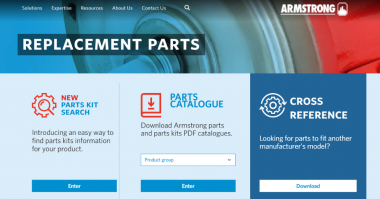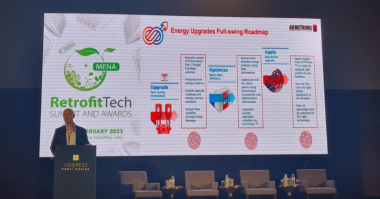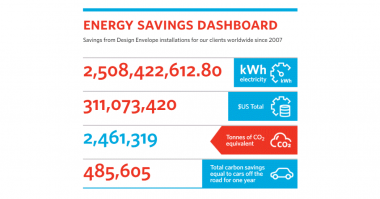A discussion of Sustainability and Growth with Lex van der Weerd, CEO for  Armstrong Fluid Technology.
Armstrong Fluid Technology.
Sustainability seems to have different meanings depending on whom you ask. What does sustainability mean to you?
Armstrong has chosen to use the Brundtland definition of sustainable development:
“Sustainable development is development that meets the needs of the present generation without compromising the ability of future generations to meet their own needs.”
World Commission on Environment and Development. Our Common Future. (Oxford, Great Britain: Oxford University Press, 1987).
In both cases, present and future, the emphasis is on need. Sustainable development should focus on meeting the needs of today, and demonstrate requisite consideration for the needs of future generations. It’s a more eloquent version of balancing the requirements of people and planet in a forward-looking and financially responsible manner. We are firmly convinced that sustainability does not have to come at a cost premium. It is very possible to achieve both the lowest installed cost and the lowest operating cost through selecting innovative solutions.
Will focusing on Sustainability help the pump industry?
The pump industry will benefit to the degree that manufacturers and designers focus on producing solutions that are in alignment with sustainable development. Manufacturers that continue to focus their efforts on selling outdated inefficient equipment may not be around five or 10 years from now. On the other hand, manufacturers who actively and energetically advance the efficiency and customer utility of their solutions will be rewarded with repeat orders from loyal customers, and can be expected to grow and succeed as the industry evolves to accept energy efficiency and carbon reduction as primary considerations.
The terms Smart Pump and Intelligent Pumping are used interchangeably. Do you see a difference?
There is a difference, and it is unfortunate that the two terms do appear to be used interchangeably. A smart pump, in our estimation, refers to a pumping unit that has variable speed functionality available, or perhaps includes the ability to interface with building automation systems. The term intelligent pumping, on the other hand, adds new functionality to smart pumps (by replacing mechanical components with electronic solutions) and optimizes the variable speed of pumps, based on overall HVAC’s conditions. In other words, intelligent pumping enables the various components of a HVAC system to orchestrate themselves for best overall system performance — much better than any conventional smart pumps would be able to do. There’s a substantial difference in the energy usage between the two concepts, and, as you might imagine an enormous difference in operating costs.
In HVAC, it seems there is significant focus on reducing the cost associated with electricity usage. Is there another way to reduce costs within the pumping system?
Absolutely, although in most cases we have our largest challenge communicating the tremendous potential for increasing energy efficiencies. From what we’ve seen in our Design Envelope installations, by far the biggest number on the table is the reduction in utility cost, based on proper application of demand-based intelligent variable speed technology. That said, there are considerable monetary savings available in reduced installation costs and maintenance costs. The kinds of savings available differ between installations. However, an example of installation savings opportunities that might not immediately come to mind include:
- Reduced piping cost
- Reduced piping installation cost
- Reduced need for concrete base
- Reduced floor space required
- Reduced labor costs for pump alignment
- Reduced assembly costs (for packaged systems)
- Reduced shipping and storage costs
- Reduced equipment costs through downsizing equipment
Examples of maintenance savings available include:
- Reduced labor costs for seal replacement
- Reduced labor costs for component replacement
- Reduced labor costs related to investigating and researching HVAC system problems
- Reduced maintenance costs by extending equipment life
Do you see a trend of more owner to manufacturer interaction?
We definitely perceive a need for more interaction between owners and manufacturers. The technology evolves rapidly, and availability and understanding of the technology is paramount to reaping the benefits.
Within the commercial industry, how do you determine which markets to target?
Armstrong tends to focus on markets where we feel we can make the most difference and provide the most value for customers and stakeholders. . One example of this is the work we’ve done to help with installations in healthcare facilities and data centers. Through repeated installations, we’ve been able to show that Armstrong design envelope technology can improve HVAC system operation measurably. This leads to improved temperature control, and substantially reduced operating costs, which in turn makes a big difference to the quality of healthcare or data services that a facility can offer.
Do you see the growth opportunities based on region or with niche industries?
Based on what we have experienced in the HVAC industry it’s hard not to see opportunities, almost anywhere you look. The vast majority of buildings in use today still rely on technology from the analog era, and have not yet upgraded their HVAC systems to take advantage of intelligent demand response technology, and the energy- and cost-saving potential of Design Envelope. So, in our view the growth opportunities are huge and not confined to specific regions or industries.
What is the greatest advantage in using the Design Envelope approach?
There are of course a number of advantages, including lowest first cost, reduced maintenance cost, reduced risk, and improved occupant comfort. However, from a financial standpoint, the greatest advantage in using Design Envelope technology comes from the energy savings. We have so many installation stories that involve customers making a decision to invest in Design Envelope solutions, and learning after the fact how much they really save on energy cost — and how much that translates into reduced carbon footprint. Of course the objective measures of energy savings and reduced carbon footprint play an important role in demonstrating to the customer how much value we provide. To that end, Armstrong has created a Sustainability Dashboard that shows in real-time the reduced carbon footprint of the Armstrong solutions installed around the world.
How do you plan to educate the industry on this innovative technology?
We seem to have our best success in direct customer interactions such as face-to-face discussions, roundtable events and webinars. In some instances those take place in smaller groups, and in other instances we are lucky enough to attract larger crowds to, for example, a training event, such as the Engineer Visit we host annually.





Comments